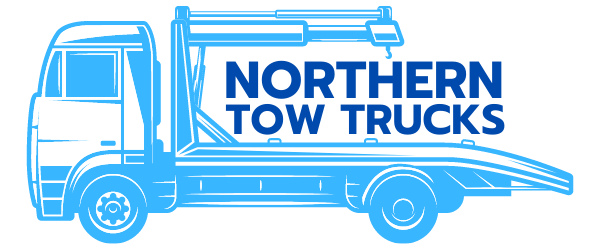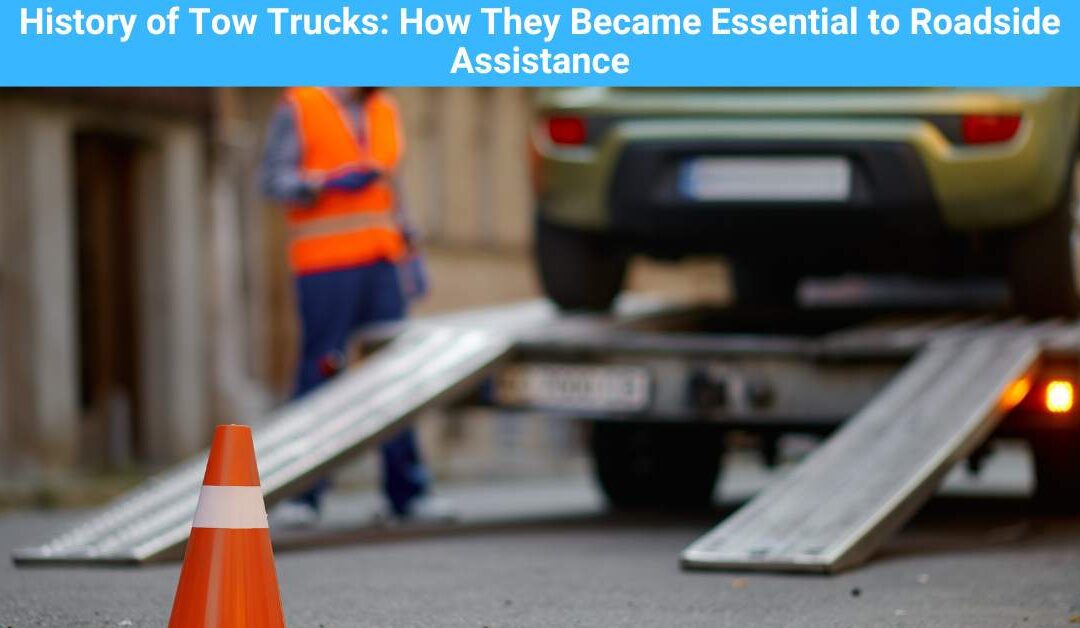Tow trucks are indispensable in today’s roadside assistance landscape, helping millions of stranded drivers and clearing roads after accidents. But where did this essential industry start? This article takes a look back at the origins of the tow truck and traces its evolution into a vital part of modern road safety and assistance.
1. The Invention of the First Tow Truck
The tow truck was invented in 1916 by Ernest Holmes Sr., a mechanic in Chattanooga, Tennessee. After a friend’s car broke down and Holmes had to use ropes, blocks, and a team of men to pull it out of a ditch, he realized there was a need for a specialized vehicle. Holmes took a modified 1913 Cadillac and added a pulley system to lift and tow vehicles, creating the world’s first tow truck.
Early Tow Truck Design: Holmes’ first design was simple but effective. Using a boom and pulley system attached to a heavy-duty chassis, his invention allowed for the safe and efficient recovery of vehicles.
Commercialization: Holmes patented his invention and started the Ernest Holmes Co., producing the first tow trucks for public and commercial use. These early models laid the groundwork for the modern tow trucks we see today.
2. Tow Trucks in the 1920s and 1930s: Expansion and Innovation
The popularity of automobiles surged in the 1920s, creating a greater need for reliable roadside assistance. Holmes’ tow truck gained widespread attention, and demand for these vehicles grew. During this period, other companies began designing their own versions of the tow truck, incorporating improvements to handle heavier loads.
Standardization: The 1930s saw the establishment of standard equipment specifications, which made it easier to produce more efficient tow trucks and meet the increasing demand.
Military Use: Tow trucks were also adopted by the military during World War II, where they were used to recover tanks and other large vehicles. This period pushed manufacturers to build more powerful tow trucks, leading to the heavy-duty models available today.
3. The Post-War Era: New Towing Methods
The post-war era brought rapid changes in automotive technology, and the tow truck industry adapted to keep up. The 1950s and 1960s saw the development of new towing methods to accommodate a growing variety of vehicles.
The Wheel-Lift System: Introduced in the 1960s, the wheel-lift method became a popular alternative to the traditional hook and chain. Instead of hooking around a vehicle’s frame or axle, wheel-lift tow trucks lift the vehicle by its wheels, minimizing the risk of damage and providing a more secure towing method.
Flatbed Trucks: By the 1970s, flatbed tow trucks gained popularity. Flatbeds allowed entire vehicles to be lifted off the ground and secured on the truck, which reduced wear on towed vehicles and became essential for high-end and exotic cars.
4. Technological Advancements in the 1980s and 1990s
The late 20th century brought major advancements in vehicle safety and technology, and the towing industry followed suit. Tow trucks became more specialized and equipped with improved technology, enhancing their safety, efficiency, and versatility.
Hydraulic Systems: Hydraulics transformed towing capabilities, making it easier to lift heavier vehicles and control equipment. Hydraulic booms and winches allowed operators to retrieve vehicles from difficult locations, such as ditches or off-road areas.
Computerized Dispatch Systems: With the rise of computer technology, towing companies began using computerized dispatch systems, which streamlined operations, reduced response times, and improved service reliability.
5. Tow Trucks in the 21st Century: Specialized Services and Green Technology
Today’s tow trucks are equipped with cutting-edge technology, and the industry offers a variety of services tailored to specific needs. Modern tow trucks are more versatile than ever, with companies investing in technologies that improve both service and environmental impact.
Specialized Tow Trucks: From heavy-duty trucks for commercial vehicles to motorcycle-specific rigs, modern tow trucks are highly specialized. Each type is designed to handle unique challenges, enhancing safety and efficiency in various towing scenarios.
Electric and Hybrid Tow Trucks: With environmental concerns rising, manufacturers are now exploring hybrid and electric tow trucks to reduce emissions. While still a newer development, these eco-friendly trucks are set to become more common, reflecting the industry’s shift towards sustainability.
6. Tow Trucks and Modern Roadside Assistance
Today, tow trucks play a crucial role in roadside assistance, aiding drivers with breakdowns, accidents, and even minor issues like lockouts and flat tires. Technological advancements have turned tow trucks into mobile service centers, equipped with tools to help stranded motorists on the spot.
Integrated GPS and Tracking Systems: GPS tracking allows tow truck operators to locate drivers quickly, ensuring timely assistance. Customers can now monitor the tow truck’s location in real-time through apps, providing peace of mind and reducing wait times.
Emergency Response: Tow trucks are essential in accident recovery and emergency response, quickly clearing roads to prevent traffic congestion and ensure safety. With improved tools and training, modern tow truck operators can handle increasingly complex recovery situations.
Conclusion: Tow Trucks as Essential Tools in Roadside Assistance
From humble beginnings with Holmes’ first tow truck to the high-tech, specialized vehicles we see today, tow trucks have become integral to roadside assistance. Their evolution reflects broader changes in transportation, technology, and customer expectations. Today’s tow truck industry continues to innovate, ensuring that help is just a call away for drivers in need, while setting new standards in efficiency, safety, and environmental responsibility.

